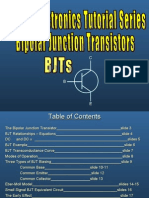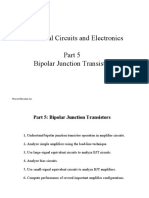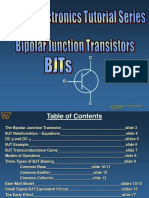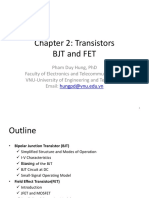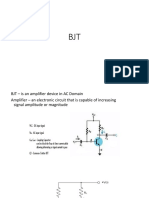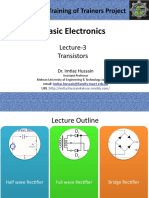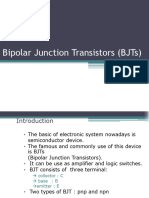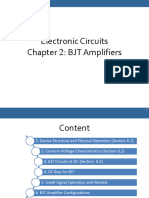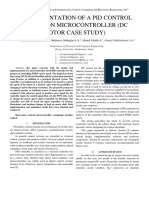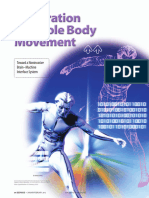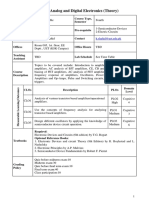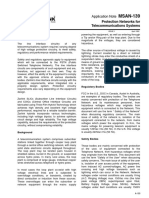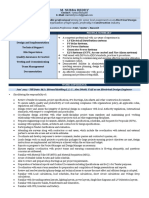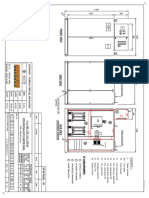0% found this document useful (0 votes)
28 views27 pagesLec 2
The document is a lecture outline on Bipolar Junction Transistors (BJTs) for an Analog Electronic Circuits II course at Shendi University. It covers the introduction to BJTs, their modes of operation, applications as switches and amplifiers, and includes practice problems. Key concepts such as BJT structure, current gain, input and output characteristics, and AC equivalent circuits are discussed in detail.
Uploaded by
Abusabah I. A. AhmedCopyright
© © All Rights Reserved
We take content rights seriously. If you suspect this is your content, claim it here.
Available Formats
Download as PDF, TXT or read online on Scribd
0% found this document useful (0 votes)
28 views27 pagesLec 2
The document is a lecture outline on Bipolar Junction Transistors (BJTs) for an Analog Electronic Circuits II course at Shendi University. It covers the introduction to BJTs, their modes of operation, applications as switches and amplifiers, and includes practice problems. Key concepts such as BJT structure, current gain, input and output characteristics, and AC equivalent circuits are discussed in detail.
Uploaded by
Abusabah I. A. AhmedCopyright
© © All Rights Reserved
We take content rights seriously. If you suspect this is your content, claim it here.
Available Formats
Download as PDF, TXT or read online on Scribd
/ 27

